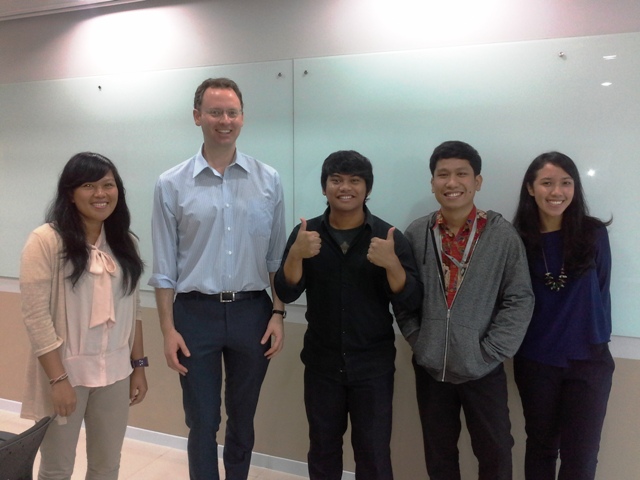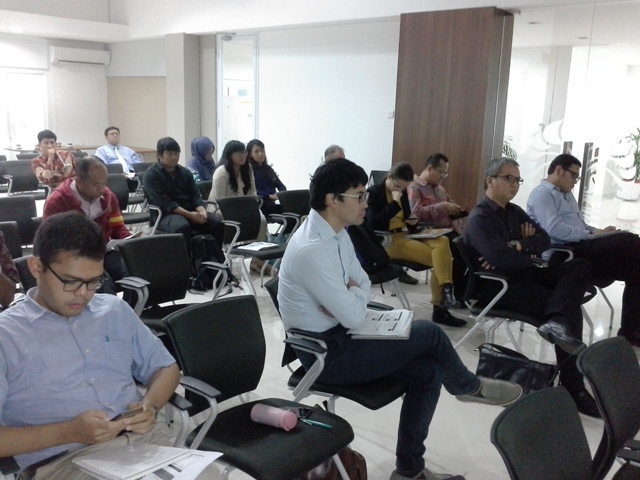Reported by Adinda Rizky Herdianti
Paul Burke (Australian National University) presented his study (a collaboration with Muhammad Halley Yudhistira of LPEM FEB UI and other researchesr) on fuel and electricity subsidy reforms in Indonesia on 17 January 2017. At the beginning of his presentation, Paul stated that the topic, particularly electricity subsidy reduction, was intriguing since it was still ongoing in Indonesia and might be the biggest recent economic reform given the size of the subsidies being reduced.
Paul started the presentation with data on fuel and electricity subsidies over recent years from the Ministry of Finance. It was visible that Indonesia had experienced increases up to 2012. The reason was the government generally tried to maintain the price of fuel and electricity, while the international oil price and cost of electricity generation increased a lot during those years. Since 2013 the government has decided to cut the subsidies and raised the price of those two commodities. This reduction was good news from the point of view of the budget as it helped the government to create additional fiscal space.
Based on the law of demand, increasing price of a commodity would lead to the consumption decline of that commodity. This principle is manifested by international evidence, which shows that gasoline consumed by the road sector, CO2 emissions, and traffic will decrease when gasoline prices increase. Paul’s study basically wants to investigate the effects of a 10% gasoline price increase on road use and the effects of a 10% electricity tariff increase on electricity use in Indonesia by doing simulations. To be able to conduct the simulations, the elasticity of demand for fuel and electricity need to be obtained first.
In answering the first question, the study uses data of toll trips operated by PT Jasa Marga, the largest toll company in Indonesia. The data consists of 9 billion trips, aggregated by 19 toll roads and month. The natural log of toll trips was regressed against the fuel price, month-of-year dummies, road dummies, road time trends, and other control variables. Paul stated that he tried to control for things outside the targeted variables, such as the number of lanes on each road and cultural celebrations, as much as he could. The result is similar to those from other countries. The reaction in the short run is inelastic: a 10% increase in fuel price would reduce the number of road trips by around 2% in one year. For the second question, the study uses data on electricity sales from the State Electricity Company (Perusahaan Listrik Negara, PLN), which cover 6 consumer groups in 16 regions for 24 years. After going through a similar procedure, it is apparent that all consumer groups have quite inelastic demand for electricity in the short run, particularly public street lights, residences, industry, and social services. The simulations show that Indonesia’s fuel subsidy reductions have reduced road trips by around 10% compared to what they would have been without the reforms. The electricity subsidy reforms have induced electricity consumption reductions of around 8.5%.
The study proposed some reform options to trim the traffic, including further fuel subsidy reductions for diesel, automatic fuel price adjustment, congestion pricing, and introducing a new fuel excise. Additionally, for electricity reform, the government is currently increasing electricity tariffs for households with 900 VA connections. Paul stated that these reforms are not likely to be bad for the poor since additional money is available to be directed to productive and well-targeted programs. Poor households have also been exempted from the electricity subsidy reforms.

